Latest news articles
Conferences & Networking
The SAS regularly sponsors conferences, workshops, and conference sessions. If you're planning an event on any topic relevant to the goals of the society, please get in touch with the VP of Intersociety Relations so that we can explore partnering with you and your organization.
If you're a student SAS member interested in getting involved with the society and promoting professional fellowship among your peers, check out the Student Ambassador program and reach out to our VP for Membership Development to learn more.
- Braden Cordivari
The SAS is delighted to announce Caitlyn Pallas as the newest Student Ambassador! This program is designed to engage students in professional development and outreach. Caitlyn is currently a PhD candidate at the University of Missouri working on the technology and production of Roman mortars. She is looking forward to organizing programs geared toward sharing tools for furthering research in all disciplines, particularly classical archaeology. Welcome, Caitlyn!
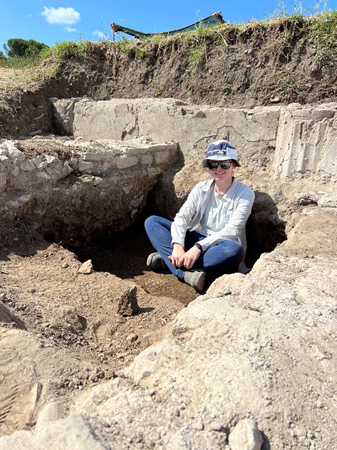
Caitlyn in her trench at the Gabii 2025 Field School, Italy
- Braden Cordivari
Congratulations to John Murray (Institute of Human Origins, School of Human Evolution and Social Change, Arizona State University; Social Sciences Department, Glendale Community College), the winner of the EAG Laboratories-SAS Student Pilot Research Award! This award is designed to support the collection of preliminary chemical data for use in major funding applications and was newly launched in 2025. SAS is excited to see the results of John's research on silcrete and stone tools and is grateful to Eurofins EAG Laboratories for their support of this award.
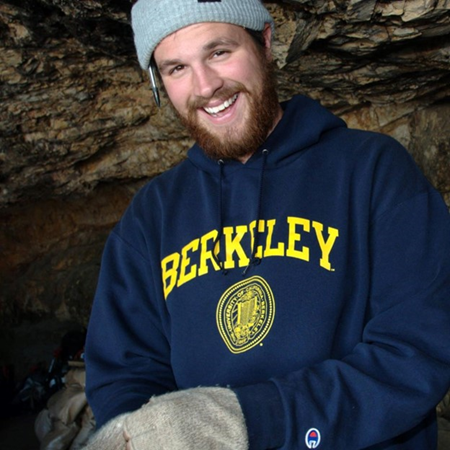
“How does geochemistry vary with mineralogy across South African silcrete sources?”
This award will allow John to apply Scanning Electron Microscopy – Energy Dispersive X-ray Spectroscopy (SEM-EDS) to geological thin sections of South African silcrete to better understand how silcrete structure relates to variation in geochemistry. Silcrete was commonly heat-treated and used as a raw material for manufacturing stone tools in the Middle Stone Age of South Africa. Due to its formation processes, the structure and quality of silcrete is highly variable and not all sources respond to heat treatment in the same way. Thus, it is important that we understand the mineralogical structure and geochemistry of archaeologically relevant sources to determine how heat treatment influences these characteristics.
John’s research focuses on better understanding how Middle Stone Age humans heat-treated silcrete on the south coast of South Africa through experimental archaeology, lithic analysis, and machine learning. This research contributes to a long-standing debate surrounding the complexity of the method used to heat-treat silcrete which may have implications regarding human cognition, social learning and teaching, and possibly language. Also, it has provided new pathways to identify heated silcrete in the archaeological record that are non-destructive, quantitative, and field friendly.
- Braden Cordivari
We are very pleased to announce that the Journal of Archaeological Science (JAS) and Society for Archaeological Sciences (SAS) Emerging Investigator Award for 2024 has been awarded to Lasse Lukas Platz Herskind for the paper “A computational linguistic methodology for assessing semiotic structure in prehistoric art and the meaning of southern Scandinavian Mesolithic ornamentation”. Follow the DOI for more info: https://doi.org/10.1016/j.jas.2024.105969
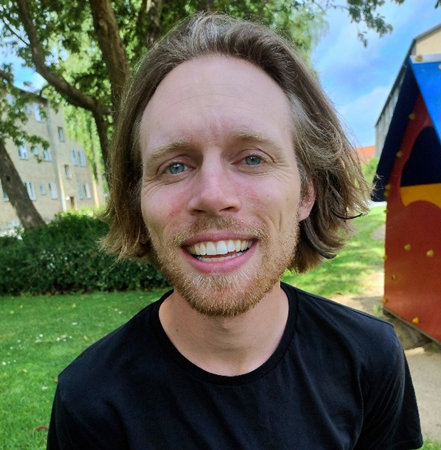
The paper was selected as an outstanding example of transdisciplinary work, combining computational methods and Mesolithic non-figurative art with linguistics and semiotics. The study provides a novel approach for analysing ancient semiotic systems through art objects and proposes new methodologies for tackling concepts of symbolism, language and communication in prehistoric societies. The paper serves as a strong example of digital humanities, and has a wider impact on understanding intangible heritage and social connectedness in archaeological research.
Author’s comments
“I remain proud of this publication but am nonetheless overwhelmed by the positive feedback it has received. This computational linguistic approach is hopefully only the first in a series of interdisciplinary novelties to prehistoric art research, and it is my hope that fellow researchers will help me explore, improve, and test these ideas.”
Honorable Mentions
Due to very high number and quality of papers this year, the Award Committee decided to announce three Honourable Mentions for the SAS-JAS Emerging Investigator Award 2024:
- Jasmine Vieri for the paper “Beyond baselines of performance: Beta regression models of compositional variability in craft production studies”, cf https://doi.org/10.1016/j.jas.2024.106106. The paper was highlighted as an innovative example of a modelling-based approach for compositional data that can make a significant contribution for the chemical analysis of archaeological artefacts across different material classes.
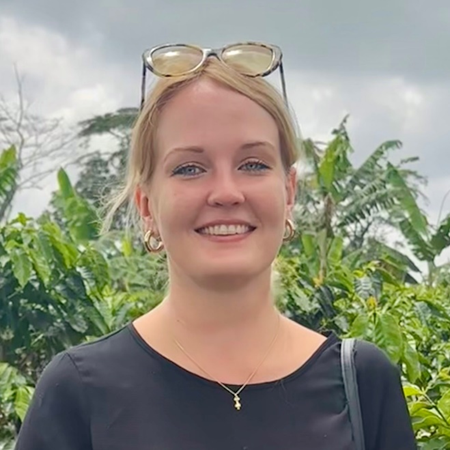
- Jean Rodier for the paper “Hammerscale and slag inclusions: New insights into metal supply during the early iron Age in Western Europe”, cf https://doi.org/10.1016/j.jas.2023.105925. The paper was highlighted as a groundbreaking microarchaeological study of a type of material that is abundant but understudied, opening new avenues for provenancing archaeological iron.
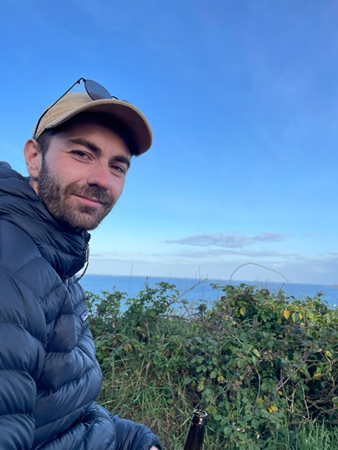
- Li Kangkang for the paper “Multi-proxy investigations of Bronze Age diet and environment in the hyper-arid eastern Tarim Basin (Lop Nur), northwest China”, cf https://doi.org/10.1016/j.jas.2024.106089. The paper was highlighted as a noteworthy multiproxy biomolecular research tackling the correlations of past foodways and adaptations with extreme environments.
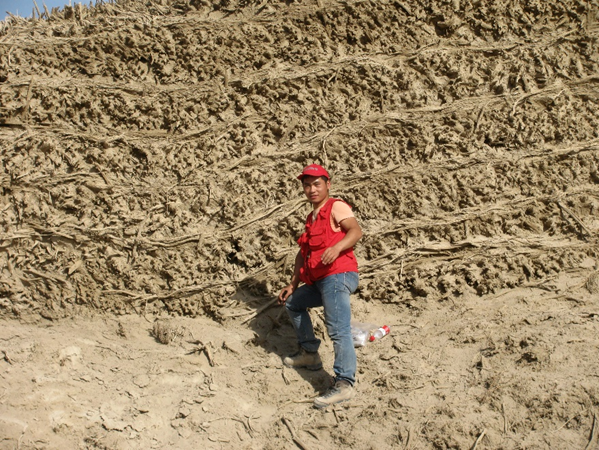
Congratulations to this year's award winner and honorable mentions on their fantastic contributions!
- Braden Cordivari
Congratulations to the 2025 awardees of the new Beta-SAS Radiocarbon Dating Award! This annual award is designed to facilitate research into geographically and thematically underrepresented areas of radiocarbon dating. This year’s awardees will push the boundaries of radiocarbon research with an examination of the process of neolithization in the inland regions of the Iberian Peninsula through Bayesian modeling (Estíbaliz Espada-Martín), analysis of insects from a prehistoric cave in Granada, Spain to understand prehistoric funerary activity (Pedro Henríquez Valido), and the establishment of a chronological sequence for Southern Honduras, key for understanding the region and its interactions with Mesoamerica and Southern Central America (Marie Kolbenstetter). Congratulations to Estíbaliz, Pedro, and Marie, and thanks to Beta Analytic for their support of these early career scholars! We look forward to following their results!
Estíbaliz Espada-Martín (Universidad Autónoma de Madrid) "Neolithization of the Iberian Peninsula: Radiocarbon Dating of a Negative Structure in the Middle Tajo Basin (El Congosto, Rivas-Vaciamadrid, Madrid)
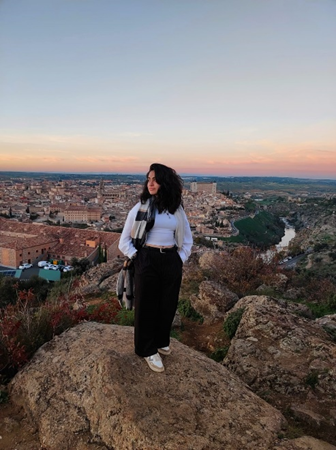
The process of neolithization on the Iberian Peninsula has traditionally been studied in coastal regions, with the interior areas being largely overlooked. Recent research, however, has revealed significant cultural diversity within the Meseta, particularly in the middle Tagus basin. This region faces notable chronological challenges due to the scarcity, complicating the establishment of an accurate timeline for the Neolithic period. In response, this project will secure an accurate date for a negative structure located at El Congosto. By analyzing specific samples, the research will integrate the new data into Bayesian models, refining the Neolithic chronological framework. This improved timeline will significantly enhance our understanding of the evolution of cultural and technological traditions in this under-explored part of the Iberian Peninsula, providing new insights into the processes underlying neolithization.
Estíbaliz is currently a PhD candidate funded by the Spanish Ministry of Universities. Her research focuses on Neolithic pottery production from the middle basin of the Tagus River in central Spain. The primary goal of this work is to reconstruct pottery technologies and manufacturing traditions of prehistoric communities in central Iberia. To achieve this, she employs ceramic petrography, X-ray diffraction (XRD), and X-ray fluorescence (XRF). Additionally, she has a strong interest in culinary practices, especially those related to dairy processing and consumption.
Pedro Henríquez Valido (Universidad de Alcalá, Área de Prehistoria) "Dating of insects associated with cadaveric decomposition in a prehistoric context at La Cueva de Los Murciélagos de Albuñol (Granada, Spain)”
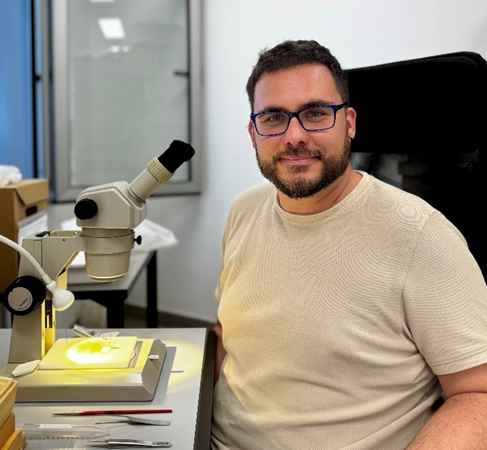
The archaeological remains in this cave have been removed as a result of mining activities in the 19th century. However, the preservation of the organic remains in this site is spectacular, which has made it possible to preserve not only insects, but also the remains of arrows and the oldest basketry in Europe. The insects recovered and their chronological contextualization will allow us to know the times of occupation of the cave as a funerary space, but also to try to locate where the cadaveric deposits were located. Pedro’s career has focused on the study of archaeobotanical and archaeoentomological remains in storage contexts. During his thesis he worked on this type of materials in granaries excavated in caves by the indigenous population of the Canary Islands (N.W. Africa continent, Spain), and he is currently studying insects associated with cadaveric decomposition in prehistoric contexts.
Marie Kolbenstetter (Leiden University/Université Paris Nanterre) "Chronology building for precolonial Southern Honduras”
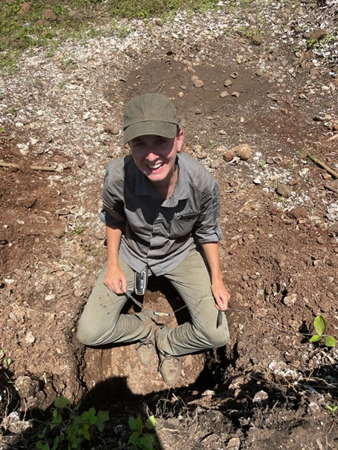
By revisiting eight key sites in Southern Honduras and conducting AMS radiocarbon dating on four of them, the awarded project proposes to reassess the existing cultural sequence for the region and anchor it in absolute chronology. This chronological reassessment will enable a reevaluation of existing archaeological data, and serve as a foundation for future archaeological work in the region. The results will also play an essential role in facilitating regional comparisons with Mesoamerica and Southern Central America. In this, the Beta-SAS Radiocarbon Dating Award provides essential support for building chronology in a region where absolute dating remains sparse. Marie's broader research interests lie with interaction and the construction of local identities in Central America. Her current work explores how both precolonial and modern practices have shaped, and continue to shape, local identities in Southern Honduras, where she has been leading her own archaeological project since 2021. In her dissertation research, she combines data from archaeological and ethnographic fieldwork to investigate how ceramic and lithic technology, ritual practices, and fishing and mollusk harvesting activities contribute to the construction of place, territory, and social landscapes in the Gulf of Fonseca.
- Braden Cordivari
SAS is excited to share news of the 2025 recipients of the Student and ECR Research Support Award, given earlier this spring! This year’s awardees are Malavika Chatterjee (Postdoctoral scholar, Indian Institute of Technology Gandhinagar), Braden Cordivari (PhD student, New York University), and Amit Ranjan (PhD student, Ashoka University). The awards will support these three scholars as they undertake research into lithic technology (Malavika), ceramic production (Amit), and metallurgy (Braden). The recipients will conduct analysis using a range of established and cutting-edge techniques, from gathering microstructural and compositional data to morphometric modeling and machine learning, and we look forward to following the results of their research!
Malavika Chatterjee: “Towards developing an analytical and digital framework for the Indian Palaeolithic”
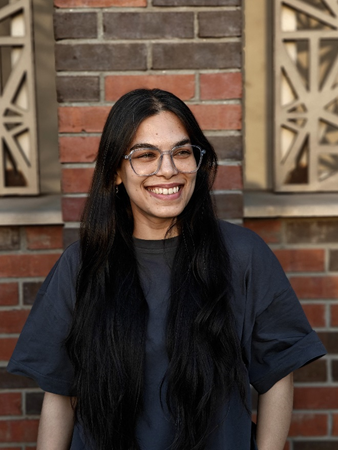
The project examines the variability in Palaeolithic artefacts from key sites in southern India by digitally documenting them through 3D scanning and Photogrammetry and analysing them with Geometric Morphometrics. These innovative digital documentation methodologies will supplement decades of published literary research (on explorations and excavations) and traditional approaches in lithic analysis (typo-technological analysis) to develop a comprehensive, open-source digital database of the Indian Palaeolithic. By understanding variability in lithics through different methodologies and adopting machine learning, an attempt will be made to develop a model(s) with a lexicon and glossary for relevant terms in lithic technology and analyses developed from the Indian Palaeolithic assemblages. The research endeavours to integrate lithics found in non-primary contexts into the database to actively incorporate them into our understanding of the Indian Palaeolithic. Ultimately, this dataset(s) can then be made accessible virtually, resulting in the assimilation of archival collections, knowledge sharing and encouraging studies in prehistory.
Braden Cordivari: “The golden touch beyond Midas: technological innovation and social value of brass alloying in Iron Age central Anatolia, 12th-4th centuries BCE”
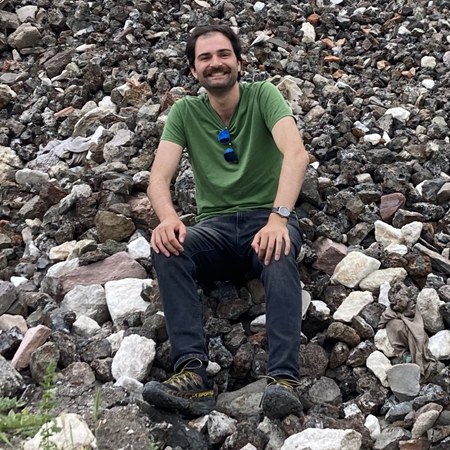
Brass alloys (copper-zinc) appear in Anatolia in the early 1st millennium BCE, centuries before their widespread adoption across western Asia and the Mediterranean during the Roman period. High quality copper alloy metalwork is a hallmark of Iron Age Anatolia, remembered later by the Greeks as the ‘golden touch’ of the Phrygian king Midas. My PhD project examines the use of brass alloys in central Anatolia, particularly at the site of Gordion, the Phrygian capital. Preliminary results from pXRF show that brass is more widespread than previously recognized. The support of the SAS Award will enable examination of working practices through metallographic and SEM analysis in order to understand whether brass and non-brass alloys were crafted in similar ways. Braden’s research interests generally include craft production, archaeometallurgy, and pyrotechnology, as well as the between political networks and craft practices.
Amit Ranjan: “Tracing the Development of Indus Ceramic Tradition and Production Technique using ceramic Petrography and ICP-MS Analysis of regional Indus pottery from Rakhigarhi”
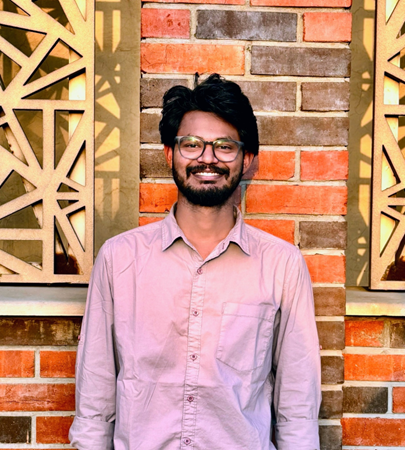
The primary objective of this research is to investigate the continuity and changes in regional pottery production technologies and cultural choices. It focuses on the selection of raw material, clay preparation and firing technologies in ceramic traditions from the Hakra Ware Phase to Early Harappan (Sothi-Siswal) and Mature/Urban Phase at Rakhigarhi (RGR-7) in the Ghaggar Basin, using a combination of traditional typological analysis with advanced analytical methods like ICP-MS and Petrology. Amit’s research investigates ancient ceramic production technologies, aiming to reconstruct the development, transmission, and adoption of technological knowledge across generations and cultures. He explores standardization in ceramic production, the selection and provenance of raw materials, tempering practices, firing conditions, and decorative techniques such as painting. Using advanced analytical methods—including XRF, ICP-MS, FTIR, XRD, Raman spectroscopy, microscopy, and 3D geometric morphometrics—Amit analyzes the chemical, mineralogical, and petrographic composition of ceramics to understand their socio-economic and cultural significance.
- Andrew Zipkin
As a member organization of the Federation of Analytical Chemistry and Spectroscopy Societies (FACSS), The Society for Archaeological Sciences (SAS) once again played a central role in shaping the program at this year’s SciX conference in Raleigh, North Carolina in October. SAS members Andrew Zipkin and Mary Kate Donais co-chaired the Art & Archaeology Section together with graduate student Kristen Livingston. Three invited speaker symposia were organized across two conference days: 1) Student Research in Archaeological Chemistry; 2) LA-ICP-MS Applications in Art and Archaeology; and 3) Imaging Technologies for Cultural Heritage.
